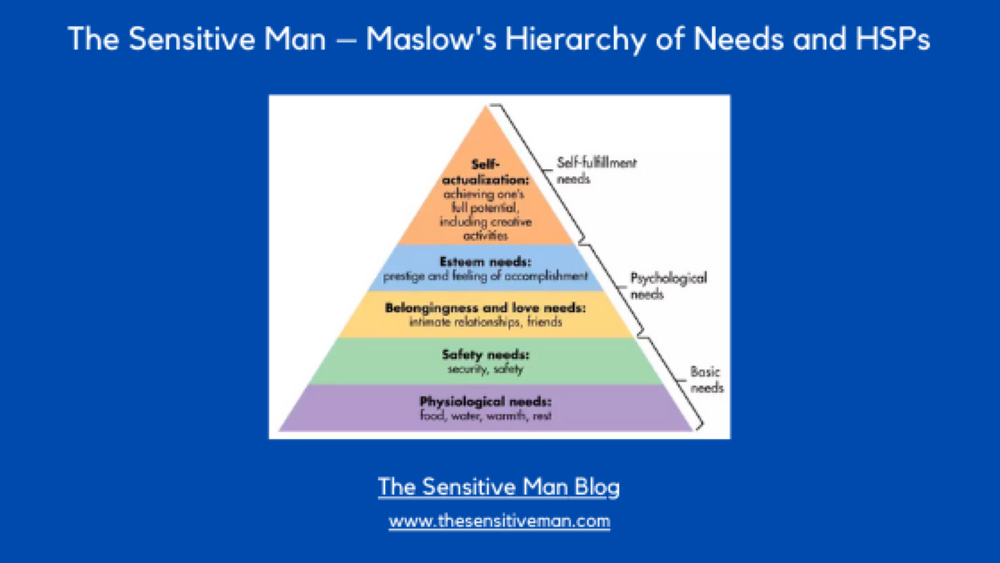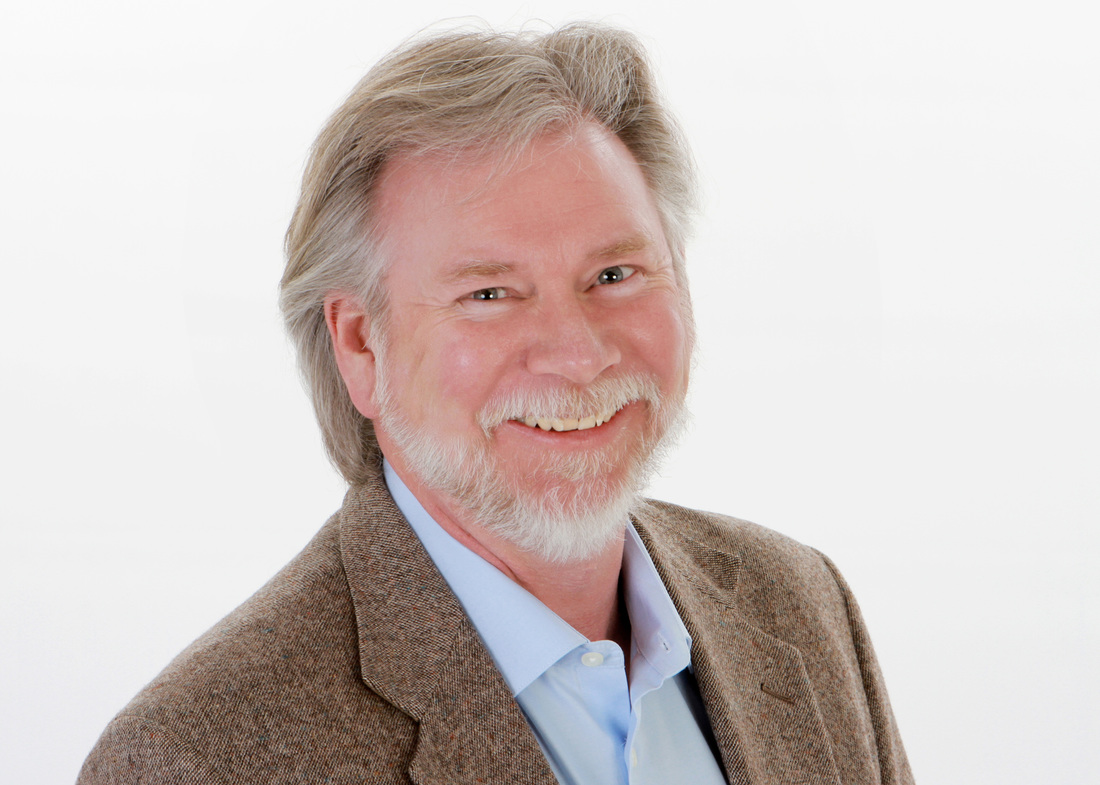|
A Blog about Sensory Processing Sensitivity from the Worldview of a High Sensing Male
When I was an undergrad in Psychology in the 70s, I was drawn to Humanistic and Transpersonal Psychology. These movements that predated my attendance at school were schools of thought that I could easily wrap my head around. As a young HSP psychology student, it made perfect sense to focus on how one could achieve the best from oneself. These two thought platforms of Psychology seemed to do that nicely and reflected my personal beliefs about the growth of the individual. Led by Abraham Maslow and later Carl Rogers, Maslow felt that a study of human motivation and subsequent behavior should be based on what could be called aspirational needs and foundational needs represented by a hierarchical structure. This emphasized personal growth and not psychopathology as its cornerstone. This revolutionary idea reflected the sixties' mood towards the individual as an expression of creativity and personal development. Maslow developed a structure that became the basis for the hierarchy of needs (HON). It focused on two sets of major category needs, deficiency needs, and growth or being needs. The deficiency needs were needs that, when unmet, created a deficit in the individual's life and formed a driver to meeting those needs. For example, food, shelter, and safety were deficiency needs. The growth needs were largely aspirational needs that expanded the individual's growth horizon. These needs lay largely outside of the necessary needs that kept the individual alive. Maslow developed this theory largely to counter the psychoanalytic theories of Freud, which focused on psychopathology, and the automaton-like theories of the strict Behaviorists, such as Skinner, which saw behavior as a simple animalistic stimulus-response. Humanistic Psychology was what Maslow termed the third force in psychology and accounted for a holistic approach to motivation emphasizing creativity, free will, and human potential. The gist of this movement was to highlight that when fundamental survival needs are met, humans naturally seek higher growth goals to be all they can be. The existential goal was to pursue a state of self-actualization, where individuals found and experienced meaning and purpose in life that was unique to them. This was not a static, permanent state but a state of becoming, where one could experience wonder, joy, and euphoria in one's life endeavors via peak experiences. Of course, this was all very enticing to me, a young and idealistic man seeking meaning and purpose in my life. But, Is there really a hierarchy of needs for humans? Legend has it that Maslow found inspiration in a study he did of the Blackfoot Native Americans in Minnesota. When he studied the Blackfoot society, he found an enormous emphasis on cooperation, purposeful elimination of inequality, sharing, giving, and a great degree of self-esteem in the Blackfoot culture. The perplexing thing to Maslow was that the Blackfoot Nation was about raising the tide for all, where success meant all succeeded. His theory of self-actualization was not supported as a top-of-the-chart aspiration by Blackfoot society. Rather this notion of self-actualization was taught as a foundational human right, introduced to the young from the beginning of life. The next need/goal for the Blackfoot society was community actualization, supporting the whole community – where all benefit from the emphasis on community needs over the individual need. And at the top was the sense of cultural perpetuity, that passing on of cultural heritage, the looking back to the lessons of seven generations back and being responsible for seven generations into the future. This notion so astutely put by Native Peoples puts some doubt on the idea that human motivation is solely about the needs of the individual, but rather with the focus on the community, the needs of the group matter as much or more than the aspirations of one single person. Western culture has evolved to emphasize individual responsibility, behavior, and reward over the centuries. Maslow's hierarchy of needs was indeed a useful framework and a product of the times. It was a softer, less cynical approach to human motivation than pure psychopathology and less mechanical and soulless than the Behaviorists. The original model proposed five stages ranging from 1) Physiological needs basic to human survival (i.e., food, clothing, shelter, sleep, etc.) 2) Safety needs, security and safety needs, 3) Love and belongingness needs – human emotional and relational needs, 4) Esteem needs, respect, self-esteem and accomplishment and 5) Self Actualization needs – personal potential, personal growth, peak experiences. These basic five have been added to over the years. Maslow's HON was adopted by educators and had implications for business and corporate environments. A simple hierarchical formula for motivation was seized upon by those looking to motivate students and employees. If there is practical application, I suppose that gives credence to a theory. The problem is that Maslow's theory has not been universally supported by evidence-based research, which becomes the validation point for all things scientific. In addition, cultural studies have shown that the placement of priority needs varies between cultures and even between age groups. Kaufman's modern reinterpretation of this model. Later in his life, he began to rethink much of what he had earlier articulated. Scott Barry Kaufman, a leading cognitive psychologist and scholar of humanistic psychology, has helped reinterpret some of this model via Maslow's later in life letters and papers. Kaufman, in his book Transcend, takes much of what Maslow has stated and offers support for many of his ideas via more recent research. He has used his own metaphor (a sailboat) and eschews the whole triangle/ pyramid schematic for something more functional in lieu of today's research. As do many now, Kaufman states that the idea of a stepped approach to growth should not be rigid, and various needs can be aspired to at once. He describes self-actualization in terms of three main requirements: exploration, love, and purpose. At the lower levels of needs, he describes security as comprised of self-esteem, connection, and safety. Above his model is the need for transcendence, that sense of growth as an individual and with unity and harmony in the larger world. I believe Kaufman's updates are perfect for our times. So, does Maslow HON still hold water for our times? I think so as a framework. What's still good about it? The identification of fundamental needs may indeed be universal. As humans, the requirement for physiological needs fulfillment is key to survival. The need for safety, security, and acceptance is pretty important, as we are indeed social animals. But above and beyond that, it gets very fuzzy. As we move up the list, the importance of needs or even defining critical needs becomes more and more difficult as you move through cultures, age groups, and perhaps even gender. Maybe the more complicated the society you live in reflects the complexity that might come about as needs you reach for outside of the fundamentals becomes apparent. Perhaps, we should think about circles and clouds instead of a stair-stepping pyramid. Can we make a practice of the hierarchy of needs for HSPs? As far as the usefulness of this model for HSPs, I still think there is validity here. HSPs tend to be purpose and meaning-driven individuals. We could almost live or aspire to be in the top section of self-actualization and be pretty damn happy about that. However, once we've met our fundamentals, I think the sky could be the limit for HSPs looking for a working framework to chart their lives. Perhaps, an Ikigai like Venn Diagram would be more useful. What matters is that we recognize what our own individual needs are. What constitutes success in a well-lived life will most likely vary from individual to individual. But what could this framework mean to us – a checklist, a plan, a needs assessment, or just an aspirational model, a vague roadmap with lots of scenic stop-offs and vista points? Not to be flippant, but all of the above might apply. Looking forward with the hierarchy of needs. Maslow explored and theorized about human motivation. This was probably a good thing during the heyday of Industrial/Organizational Psychology. We know now that HON is not a simple staircase to climb one level at a time. The model suggested progression but was not as dynamic as I think the newer models offer. Instead of levels of needs, perhaps, what we need is various points along a field where needs arise and subside as we go through a meaningful life. We deal with them as they arise, a problem to be solved and reckoned with, only to spawn another need. Then again, maybe we need to go back to a simpler model. Please comment with your thoughts.
0 Comments
Leave a Reply. |
AuthorBill Allen currently lives in Bend, Oregon. He is a certified hypnotist and brain training coach at BrainPilots.com. He believes that male sensitivity is not so rare, but it can be confounding for most males living in a culture of masculine insensitivity which teaches boys and men to disconnect from their feelings and emotions. His intent is to use this blog to chronicle his personal journey and share with others. Archives
July 2024
Categories
All
|


 RSS Feed
RSS Feed
